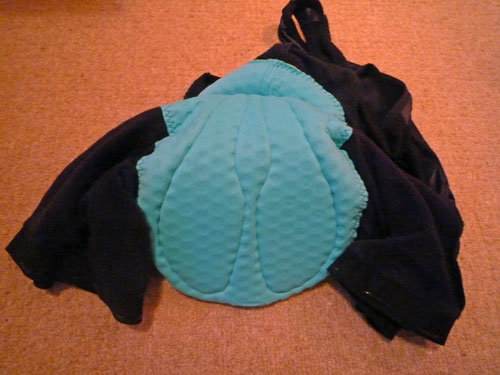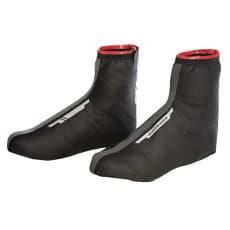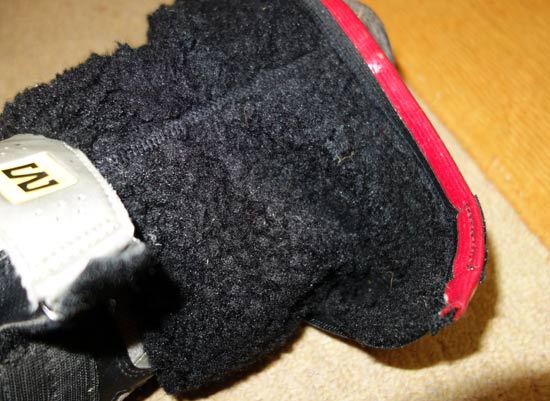A review of Assos T607 F1 Mile shorts after a year of using them.
Summary They are very expensive for a pair of shorts – around £160. But, they are probably one of the best cycling products I have bought in recent years. They have really made long 5-7 hour winter training rides much more comfortable. I used to get all kinds of pain and discomfort, but these shorts mean I don’t even think about that aspect of cycling.

Admittedly I have worn some pretty cheap and unconvincing shorts in the past. This was a big step forward from a pair of shorts costing £40 to nearly four times the value. But, I couldn’t go back to the older shorts now.
A year ago, I also bought some F1 Assos Uno cycle shorts for £117. They are also excellent, But, I find I tend to wear these T607 more often because I prefer the insulation and they are slightly more comfortable than even the F1 Uno.
The problem with cycling is that there is always a temptation to spend lots of money – weight saving carbon fibre, cool clothing, new bike e.t.c. It’s always hard to know whether spending these great sums is justified.
Firstly, it’s not often you buy a pair of shorts, and with it you get an owners manual. There’s some rather discouraging warnings.
- Do not machine wash
- Do not wash with other clothes.
- Do not ride near brambles
- Do not get caught in velcro
- (Do not get pushed into barbed wire by TV motorbike) (youtube)
Overall, there seems to be a strong warning emanating from this owners manual – Assos shorts are not designed to last. Not the most reassuring thing to read about something just costing shy of £160. Because of this I have taken care of these shorts more than any other piece of clothing I have owned.
I have hand washed them, I have taken a pee, according to the users manual, I have even avoided jumping through bramble whilst wearing them
One year on, I have got considerable use out of them, and they are still going strong. The padding is starting to be slightly worn, but it doesn’t look like it needs replacing. I’m hopefully of getting another couple of years use out of them.
Sizing
Assos warn that proper sizing is very important. Get a size too big and it won’t stay still and move around. Get a size too small and it will stretch the seams and over time disintegrate (there’s a lot of talk about the shorts disintegrating). Rather worryingly, they say most professionals usually start in size L, and later in the season move down to size M. All very well for professionals who don’t have to pay £150 to change sizes. But, I want to get size right first time. I choose size L because it fitted my height 180-185cm, (but not the weight of 80kg).
I have worn the large sizes for over a year, and it still fits fine. There is no need of wanting to move down a size. But, for obvious reasons, you want to take care with getting the right size. Importantly, there should be a stretching of shorts when you stand up in them. The important thing is that they fit you whilst in the cycling position.
Comfort of Ride
The fabric is amazingly comfortable, the shorts are comfortable everywhere. As Assos states, when you stand up, it feels tight because it’s designed to be worn in the cycle posture. And I don’t think you need a Swiss owners manual to tell you these shorts are not designed for ‘social use’ (though the ever-thorough Swiss do actually tell you that they don’t recommend wearing these shorts in a ‘social situation’)
The manual tells you to not pull the shorts into place, but merely let the shorts do the work. I oblige and let the fabric move into position, as I set off down the road. The dimpled padded insert is considerable and really well designed. Not like some old shorts where the rather feeble padding seems to stop at an inappropriate point.
After two hours into the ride, you realise you’ve hardly noticed your saddle or seating position. It’s very comfortable. After five hours in the saddle, the first signs of hardness start to appear. But, this is relatively mild. At the end of the ride, I was really praising the design of the saddle. It’s done a lot to improve the ride quality over other cycle shorts. It is a big step up from any other cycle shorts that I have experienced. This winter I have been doing rides of up to seven hours. I’ve never experienced any real discomfort. I used to suffer from a lot of the dreaded saddle sore. But, this past year, I have rarely suffered, apart from after a few time trials (where I wear skinsuit and not these shorts)





